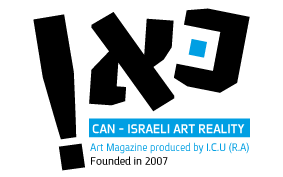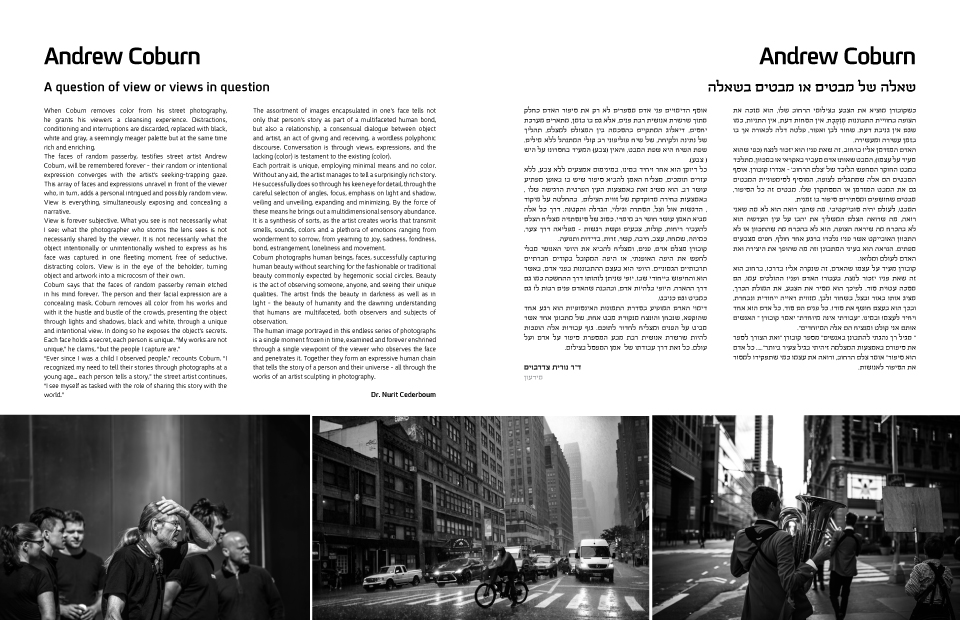
| Home Page | Editor Notices | Museums | Galleries | Publication | Donation | Contact Us |


 | |||||||||||||||
| |||||||||||||||


| |||||||||||||||
| Andrew Coburn / A question of view or views in question |
When Coburn removes color from his street photography, he grants his viewers a cleansing experience. Distractions, conditioning and interruptions are discarded, replaced with black, white and gray, a seemingly meager palette but at the same time rich and enriching. The faces of random passerby, testifies street artist Andrew Coburn, will be remembered forever - their random or intentional expression converges with the artist’s seeking-trapping gaze. This array of faces and expressions unravel in front of the viewer who, in turn, adds a personal intrigued and possibly random view. View is everything, simultaneously exposing and concealing a narrative. View is forever subjective. What you see is not necessarily what I see; what the photographer who storms the lens sees is not necessarily shared by the viewer. It is not necessarily what the object intentionally or unintentionally wished to express as his face was captured in one fleeting moment, free of seductive, distracting colors. View is in the eye of the beholder, turning object and artwork into a microcosm of their own. Coburn says that the faces of random passerby remain etched in his mind forever. The person and their facial expression are a concealing mask. Coburn removes all color from his works and with it the hustle and bustle of the crowds, presenting the object through lights and shadows, black and white, through a unique and intentional view. In doing so he exposes the object’s secrets. Each face holds a secret, each person is unique. “My works are not unique,” he claims, “but the people I capture are.” “Ever since I was a child I observed people,” recounts Coburn. “I recognized my need to tell their stories through photographs at a young age... each person tells a story,” the street artist continues, “I see myself as tasked with the role of sharing this story with the world.” The assortment of images encapsulated in one’s face tells not only that person’s story as part of a multifaceted human bond, but also a relationship, a consensual dialogue between object and artist, an act of giving and receiving, a wordless polyphonic discourse. Conversation is through views, expressions, and the lacking (color) is testament to the existing (color). Each portrait is unique, employing minimal means and no color. Without any aid, the artist manages to tell a surprisingly rich story. He successfully does so through his keen eye for detail, through the careful selection of angles, focus, emphasis on light and shadow, veiling and unveiling, expanding and minimizing. By the force of these means he brings out a multidimensional sensory abundance. It is a synthesis of sorts, as the artist creates works that transmit smells, sounds, colors and a plethora of emotions ranging from wonderment to sorrow, from yearning to joy, sadness, fondness, bond, estrangement, loneliness and movement. Coburn photographs human beings, faces, successfully capturing human beauty without searching for the fashionable or traditional beauty commonly expected by hegemonic social circles. Beauty is the act of observing someone, anyone, and seeing their unique qualities. The artist finds the beauty in darkness as well as in light – the beauty of humanity and the dawning understanding that humans are multifaceted, both observers and subjects of observation. The human image portrayed in this endless series of photographs is a single moment frozen in time, examined and forever enshrined through a single viewpoint of the viewer who observes the face and penetrates it. Together they form an expressive human chain that tells the story of a person and their universe – all through the works of an artist sculpting in photography. Dr. Nurit Cederboum Read more  |
| all rights reserved - CAN ISRAELI ART REALITY |
| סייבורג מחשבים - בניית אתרים |